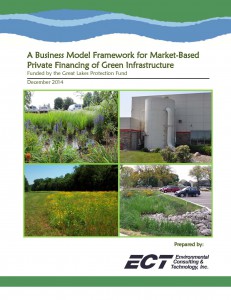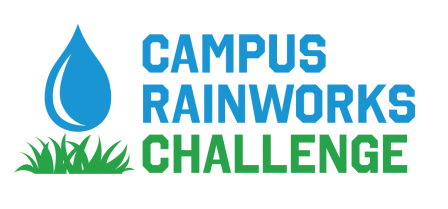 According to a study funded by the Great Lakes Protection Fund (GLPF), private financing of green infrastructure is being hampered not by a lack of capital but by a shortage of opportunities with enticing returns. This is the leading reason private financiers have been hesitant to invest and implement green infrastructure as a cost-effective solution to flooding and water quality impairments.
According to a study funded by the Great Lakes Protection Fund (GLPF), private financing of green infrastructure is being hampered not by a lack of capital but by a shortage of opportunities with enticing returns. This is the leading reason private financiers have been hesitant to invest and implement green infrastructure as a cost-effective solution to flooding and water quality impairments.
Announced in January, “A Business Model Framework for Market-based Private Financing of Green Infrastructure,” summarizes challenges and opportunities for tapping private investments as a source of funding. The study also covers regulations imposed by current governance, land ownership, and utility and municipal financial models. Researchers found that while municipalities are eager to implement green infrastructure as part of the design, construction, and operation of distributed stormwater solutions, current budgets remain strained, and municipalities have been slow to implement these practices.
Environmental Consulting & Technology, Inc. and its team, which included Galardi Rothstein Group, Greenleaf Advisors LLC, and Geosyntec Consultants, identified the advantages of incorporating smaller, low-cost, green solutions with current gray approaches to increase the scale of the project, and in turn, attract private funding. A preliminary business model framework was developed that supports implementing green infrastructure by offering buyers and sellers access to the market. This framework employs a “combine-and-coordinate” mentality to attract private investment, which supplements community needs including flood control, green space development, and even water supply augmentation.





